Design life 48 hours Manufacturer NPO Mashinostroyeniya | Applications Manned lunar landing Launch mass 5,560 to 6,525 kg | |
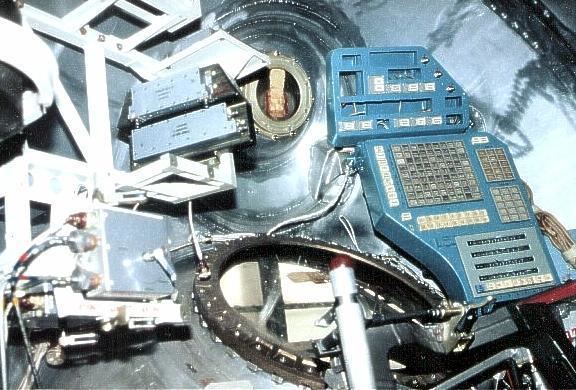 | ||
Similar Soyuz 7K‑LOK, Soyuz 7K‑L1, Soyuz 7K‑OK, Zond 5, Zond 7 | ||
The LK (Russian: ЛК, from Russian: Лунный корабль or "Lunniy korabl", "Lunar craft"; GRAU index 11F94) was a piloted lunar lander developed in the 1960s as a part of the Soviet attempts at human exploration of the Moon. Its role was analogous to the American Apollo Lunar Module (LM). Several LK articles were flown without crew in Earth orbit, but no LK ever reached the Moon. The development of the N1 launch vehicle required for the Moon flight suffered setbacks (including several launch failures), and the first Moon landings were achieved by the Americans. As a result, both the N1 and the LK programs were cancelled without any further development.
Contents
- The N1 L3 flight plan
- Lunar orbit
- Lunar landing
- Earth return
- Design
- Systems
- Instruments
- Testing
- Cancellation
- LK compared to the Apollo Lunar Module
- Current location
- References
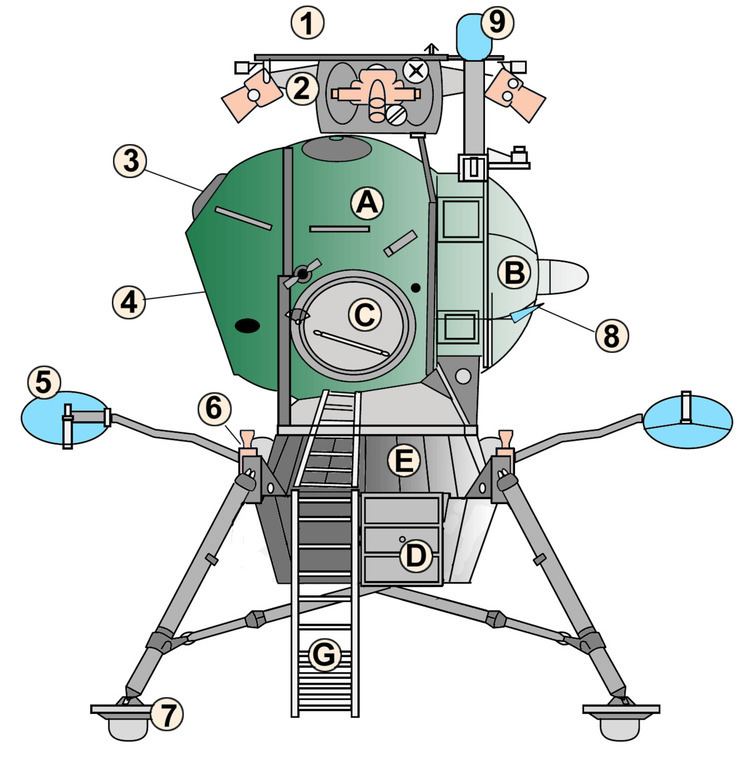
The N1-L3 flight plan
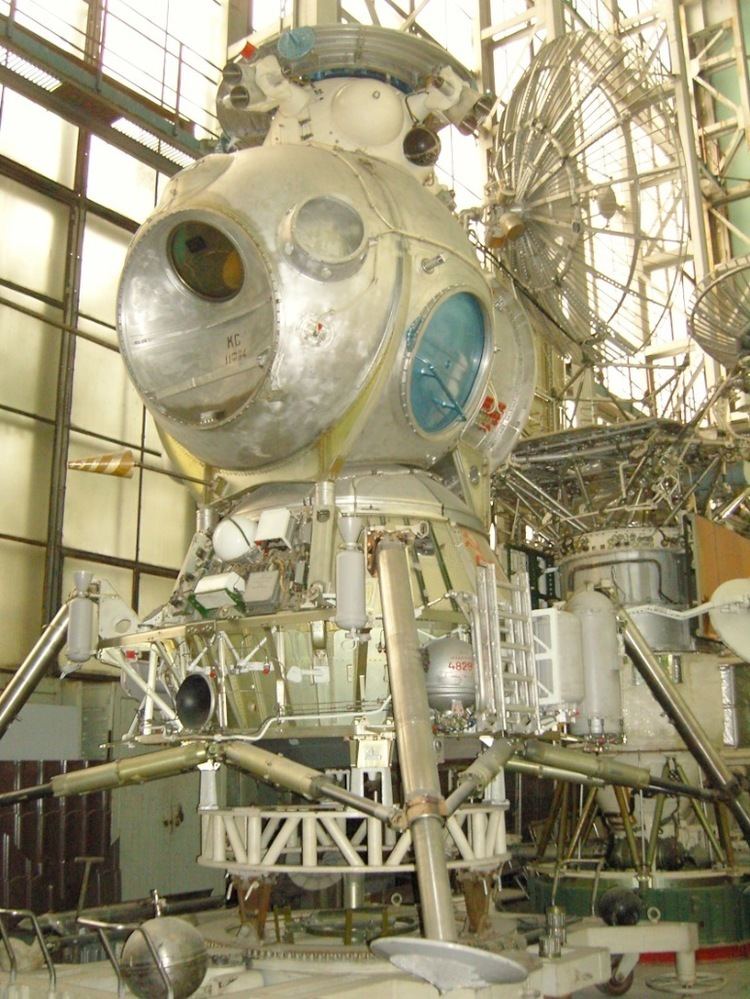
Sergei Korolev, the lead Soviet rocket engineer and spacecraft designer during the 1950s and 1960s, planned to adopt the same lunar orbit rendezvous concept as seen in the Apollo Program. The Lunar expedition spacecraft L3 consist of LOK Lunniy Orbitalny Korabl (Soyuz 7K-L3) Command Ship (a variant of the Soyuz) and LK Lander. L3 would carry a two-man crew atop a single three-stage superheavy N-1 booster. A fourth stage, the Blok G, would push toward the Moon the L3 (LOK+LK) with Blok D as fifth stage.
Lunar orbit
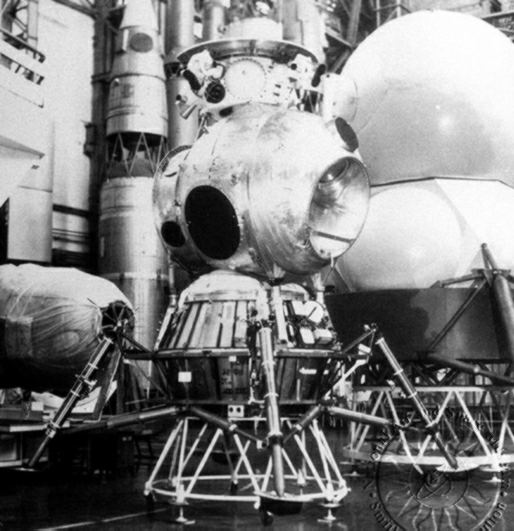
The Block D engine would also slow the L3 into lunar orbit. Following the coast to the Moon, one cosmonaut would spacewalk from the LOK to the LK (Lunniy Korabl) lander and enter it. He would then separate the Block D stage and the LK from the LOK before dropping toward the Moon using the Blok D engine.
Lunar landing

An earlier unmanned probe of the Luna programme, a Lunokhod would be used to select a suitable area, and then act as a beacon for the LK. A backup LK would then be launched to the landing site. The third step would see a manned LK landing with a single cosmonaut.
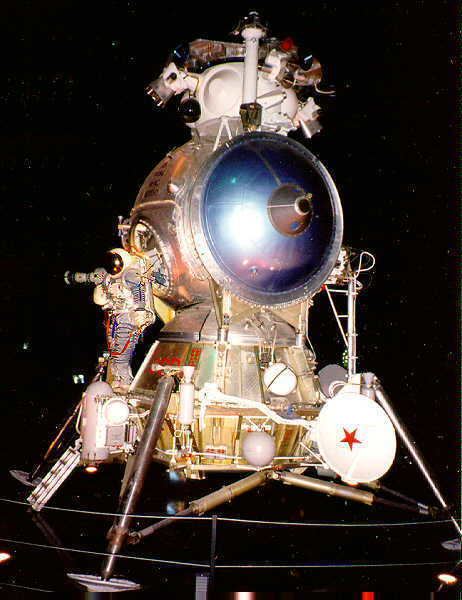
Although the specifics on planned activity while on the lunar surface remain vague, the small size and limited payload capacity of the N-1/Soyuz LOK/LK compared to the Saturn/Apollo meant that not much in the way of scientific experiments could have been performed. Most likely, the cosmonaut would plant the Soviet flag on the Moon, collect soil samples, take photographs, and deploy a few small scientific packages. Long duration missions, lunar rovers, and other activities performed on the late Apollo landings were not possible at all.
Earth return

After a day on the lunar surface the LK's engine would fire again, using its landing leg structure as a launch pad. To save weight, the engine used for landing would also blast the LK back to lunar orbit for an automated docking with the LOK, using the Kontakt docking system. The cosmonaut would then spacewalk back to the LOK carrying the Moon rock samples, and the LK would then be cast off. After this, the LOK would fire its rocket for the return to Earth. The LK's docking port was a latticework of 96 hexagon-shaped holes arranged in an isometric grid, each as a potential docking port for the snare-shaped probe of the LOK to fit in without precise alignment of the two craft. Due to weight restrictions, the docking interface was designed to be as simple as possible, with a strictly mechanical interlock and no electrical or fluid connections. Docking and undocking were only possible a single time.
Design
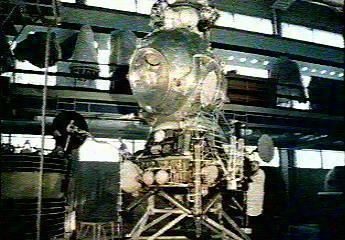
The LK spacecraft can be subdivided into the Lunar Landing Aggregate ("Lunnyi Posadochnyi Agregat", "LPA") and the Lunar Ascent Vehicle, ("Lunnyi Vzletnyi Apparat", "LVA'"). Propulsion, both for landing and lifting off the Moon was based on the Block E propulsion system. The Information Display System (spacecraft control panels and controls) version was called Luch.
Systems
The spacecraft included the following systems:

Instruments
The spacecraft included the following instruments:
Testing
The LK as T2K was tested unmanned in Earth orbit four times, as Kosmos 379, Kosmos 382, Kosmos 398 and Kosmos 434. The first test was on November 24, 1970, the second on December 2, 1970, the third on February 26, 1971, and the fourth on August 12, 1971.
All four LKs were launched with the Soyuz-L rocket. The first flight imitated the planned working cycle of the Blok E rocket block. The third and fourth flights were intended to test the LK's behavior under several flight anomalies. All flights went well, and the LK was considered ready for manned flight.
Cancellation
The success of Project Apollo in putting American astronauts on the Moon in 1969 meant that the United States won the Moon race, although plans were being drawn right up until the early 1970s. Four N1 launches were attempted including two later with dummy LK but all were failures, despite engineering improvements after each failure. The second launch attempt on July 3, 1969, just 13 days prior to the launch of Apollo 11, was a catastrophic failure which destroyed both the rocket and the launch complex. Subsequently, the complete L3 lunar expedition complex with regular LK and Soyuz 7K-LOK module-spacecraft for Moon flyby and landing by full unmanned mission of future manned scenario was prepared for fifth launch of modified N1 rocket on August 1974. The N1-L3 program was cancelled in May 1974 and the Soviets decided to concentrate on the development of space stations, achieving several firsts in the process.
LK compared to the Apollo Lunar Module
Because the translunar payload capacity of the N1 rocket was only 95 tons to LEO, versus the Saturn V's 110 tons to LEO, the LK was created to be less bulky than the Lunar Module (LM):
Current location
There are five remaining LK in various stages of completion. They are at:
